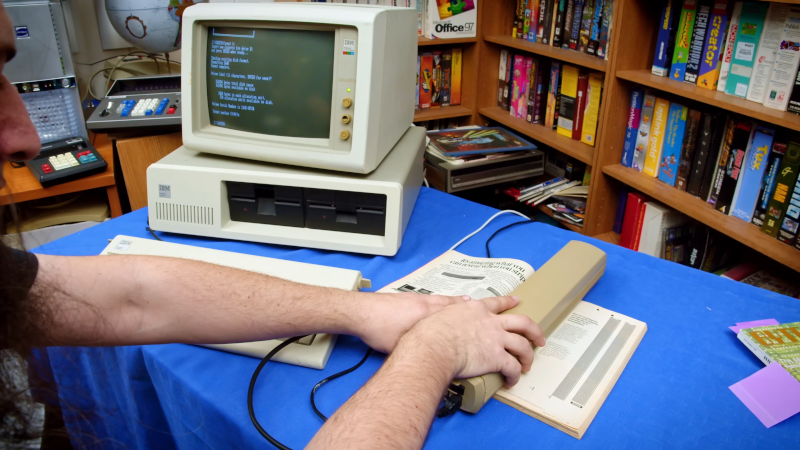If you ask someone who grew up in the late 1970s or early 1980s what taught them a lot about programming, they’d probably tell you that typing in programs from magazines was very instructive. However, it was also very boring and error-prone. In fact, we’d say it was less instructional to do the typing than it was to do the debugging required to find all your mistakes. Magazines hated that and, as [Tech Tangents] shows us in a recent video, there were efforts to make devices that could scan barcodes from magazines or books to save readers from typing in the latest Star Trek game or Tiny Basic compiler.
The Cauzin Softstrip was a simple scanner that could read barcodes from a magazine or your printer if you wanted to do backups. As [Tech Tangents] points out, you may not have heard of it, but at the time, it seemed to be the future of software distribution.
We were impressed that [Tech Tangent] had enough old magazines that he had some of the original strips. Byte Magazine had tried to promote a similar format, but there was no hardware made to read those barcodes.
Of course, there were other systems. For example, the HP-41C famously had a barcode scanner, although creating your own was clunky unless you reverse-engineered the “proper” format (which was done). The basic hardware used there also worked with Byte’s format, but you still had to interface the odd scanner to your computer.
Cauzin sidestepped all this with their product, which was simple-to-interface hardware with software support for the major platforms. However, by the time it was on the market, cheap magnetic media and modem-based bulletin boards were destroying interest in loading software from paper.
This is a great look at an almost forgotten technology. You could probably build something modern to scan these if you had the urge. These days, it would be easy enough to design your own system. Modern laser printers would probably make very dense barcodes.
We wouldn’t suggest making a Cauzin guitar, though. These days we have QR codes and even colorful barcodes.
















The HaD article about twibright optar seems like a good additional link for the end of the article.
I did a lot of typing in those days until I got a cassette player and interface. Subscribed to a monthly cassette delivery from a company I can no longer remember the name of at the moment.
I had a cassette for my MicroAce. It was brutal typing in programs on a tiny membrane keyboard. It was even more brutal when you cleared your memory and found that the write to the cassette didn’t work.
By contrast, my first “real” computer had a very usable membrane keyboard and a rock solid cassette to save my programs until I could afford a floppy drive…
I built a MicroAce also… :)) those were the days, indeed! ((and struggling to get the cassette playback volume “just right” for those… ones and zeros! :))
I recall a story of a radio station that would broadcast Manchester (?) code audio for listeners to record on cassette as a way of sharing programs. Not necessarily educational but an interesting way code was shared.
that could have been the dutch NOS with their radio show Hobbyskoop. They developed Basicode, where you first loaded a short converter program for your flavour of basic ( commodore, atari, sinclair) and then played back the broadcast recording.
My local radio station did it and I’m sure many many others did too.
They’d broadcast simple games for Spectrum, VIC20, C64 over the air.
This is just a little late for me — I was discussing the progression of barcode and the like several months ago with an associate and tooks me a bit of time to find thename of this system using the net to search for it. I remembered well the pages being publish and it was what I described at the time as a “bar code on steroids”.
I never had one as the system wasn’t cheap enough at the time and I had pretty good resources for getting apps on the machines I was using.
It was doomed to failure from the get go due to cost to buy and cost of pages to reproduce the code in publications combined with code getting bigger and bigger as we evolved — was nice for silly little apps and games
Good flashback though. It’s good to remind current users what us old timers had to go thru to even play a silly low graphic or text based game.